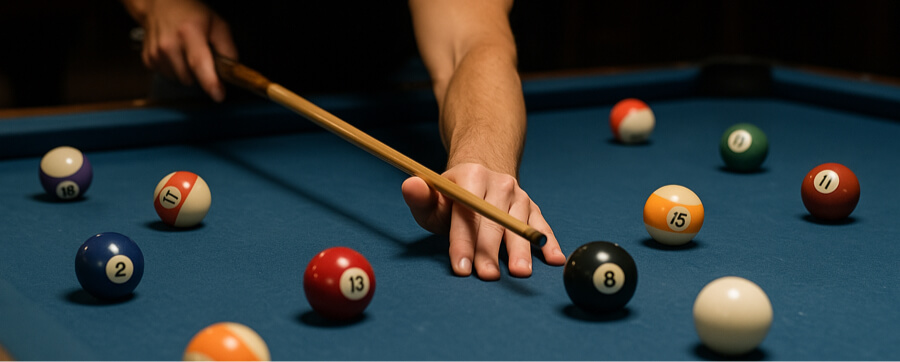The Rules of 8-Ball and 9-Ball: A Beginner’s Guide
Posted on April 4, 2025 at 9:26 am

Billiards is a game of skill, precision, and strategy, and two of the most popular variations are 8-ball and 9-ball. If you’re new to these games, understanding the basic rules will help you enjoy them and improve your play. This guide covers the essential rules of 8-ball and 9-ball so you can confidently step up to the table.
The Basics of 8-Ball
8-ball is one of the most common billiards games, played with 15 object balls and a cue ball. The goal is to pocket all your designated balls (solids or stripes) and then legally sink the 8-ball.
How to Play:
- The Break – The game starts with a break shot. If a player pockets a ball, they continue shooting. Otherwise, it’s the opponent’s turn.
- Choosing Groups – The first legally pocketed ball determines which group (solids or stripes) the player will continue to aim for.
- Turn Rotation – Players take turns attempting to pocket their designated balls. If they miss or commit a foul, their turn ends.
- Winning the Game – Once a player has pocketed all their group’s balls, they must call and sink the 8-ball to win. If the 8-ball is pocketed out of turn or knocked off the table, the shooter loses instantly.
Common Fouls in 8-Ball:
- Pocketing the cue ball (scratch)
- Failing to hit one of your designated balls first
- Pocketing the 8-ball before clearing your group
- Knocking a ball off the table
The Basics of 9-Ball
9-ball is a faster-paced game that uses only nine numbered balls (1-9) and the cue ball. Unlike 8-ball, players must always aim for the lowest-numbered ball on the table.
How to Play:
- The Break – The cue ball must strike the 1-ball first, and at least four balls must hit a rail or be pocketed.
- Shooting Order – Players must always hit the lowest-numbered ball first, but they can pocket balls in any order as long as the correct ball is hit first.
- Turn Rotation – If a player legally pockets a ball, they continue shooting. If they miss or foul, their turn ends.
- Winning the Game – The game is won when a player legally pockets the 9-ball.
Common Fouls in 9-Ball:
- Failing to hit the lowest-numbered ball first
- Pocketing the cue ball (scratch)
- Knocking a ball off the table
- Committing three consecutive fouls (results in loss of game)
Key Differences Between 8-Ball and 9-Ball
- Number of Balls – 8-ball uses all 15 object balls, while 9-ball only uses balls 1-9.
- Objective – In 8-ball, you must pocket all your group’s balls before the 8-ball. In 9-ball, you must always hit the lowest-numbered ball and ultimately sink the 9-ball.
- Strategy – 8-ball requires more planning since you have designated balls, while 9-ball allows for more aggressive shot-making and combinations.
Final Thoughts
Both 8-ball and 9-ball offer unique challenges and fun gameplay. Whether you prefer the strategic depth of 8-ball or the fast-paced action of 9-ball, mastering these games requires practice and an understanding of the rules. Now that you know the basics, grab a cue, head to the table, and start playing!
